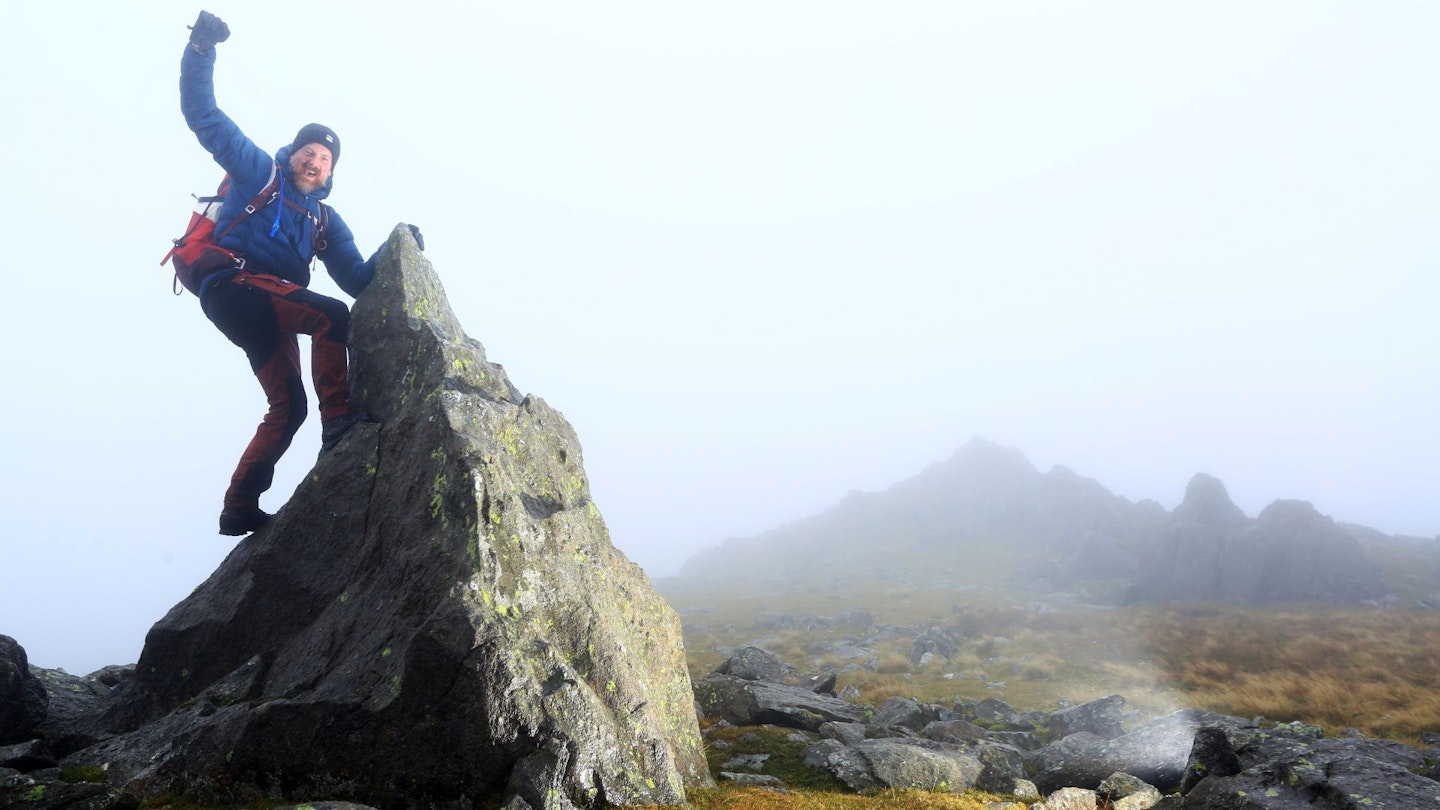The human mind is drawn to finding recognisable shapes in inanimate objects. This phenomenon even has a name: pareidolia, the ‘tendency for perception to impose a meaningful interpretation on a nebulous stimulus’. It’s why we see animals in clouds, faces in trees, and Jesus on our toast.
Why we feel the need to do the same with landscape features is more of a mystery. These already have their own identity. High Cup Nick, for example, is High Cup Nick. And yet, as a colleague of mine wrote in these pages not so long ago, you’re unlikely to find articles about this Pennine superstar that don’t at some point reference ‘England’s Grand Canyon’. But there’s one famous landmark that gets more pareidolic comparisons than any other.
That landmark is a mountain, and that mountain is the Matterhorn. It sometimes seems that everywhere has a Matterhorn – see pages below for just three of the many UK contenders. This is because the Matterhorn is such a visually iconic peak. But while some peaks could perhaps be described as Matterhorn-ish in their appearance, far more are, shall we say, stretching it a bit.

Take, for example, the ‘Matterhorn of Easedale’ – Belles Knott. It’s a comparison Alfred Wainwright drew in his Central Fells guidebook; it earns a full-page illustration in the chapter on its parent fell, Sergeant Man. Having read this description and seen the drawing, I was distinctly unimpressed by Belles Knott when I first saw it.
But on a recent trip to the Lakes, I thought I’d give it another chance. You see, something quite significant had happened in the meantime. I’d actually climbed the Matterhorn.
It was a grey day, the russet hues of the deadening bracken adding far more colour to the scene than the sky could muster, as I climbed past the in-spate Sourmilk Gill, around Easedale Tarn, and towards the steepening path below Belles Knott. For much of the way, Belles Knott is barely discernible, blending into the higher ground behind it. But as the path climbs and the Knott is neared, it separates from the surrounding landscape.
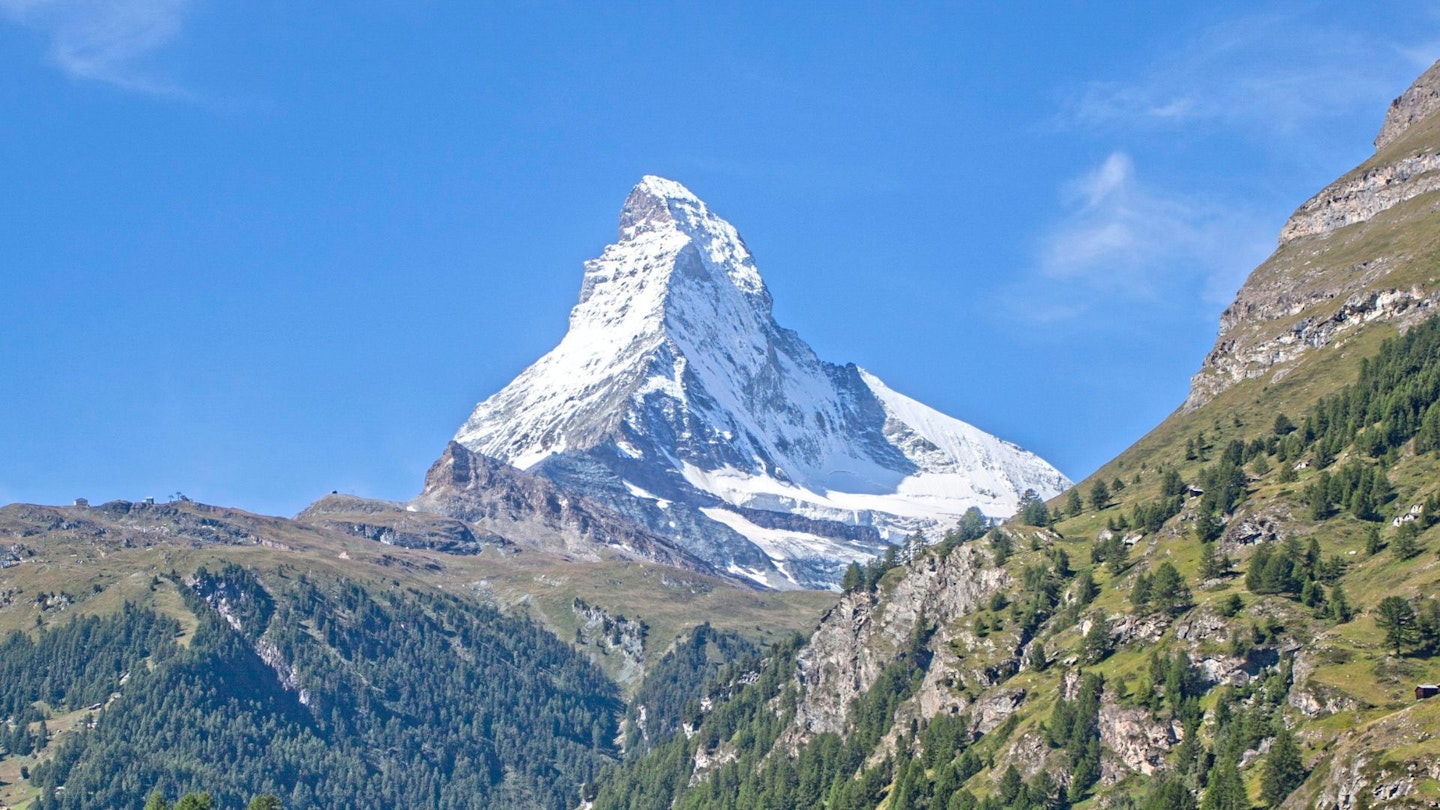
Getting closer, its rocky top first pokes into the skyline, then rises higher above it. As I walked the path, I reconsidered my previous thoughts on this ‘Matterhorn of Easedale’ and came up with the following assessment: whoever gave Belles Knott this appellation had either never seen the Matterhorn or never been to Easedale.
Sure, the closer you get to the foot of Belles Knott, the pointier it looks. But it’s still a long way from being an Alpine doppelganger. Its Easedale face might be craggy and scrambly, but once you’re on the top, you realise it’s barely a peak at all and more of a steep-sided outcrop. No, Belles Knott is no Matterhorn. In fact, so disillusioned was I with this fraudster that I began to assume I’d got it wrong. Back at the hostel I googled ‘Matterhorn of Easedale’ and, sure enough, up popped Belles Knott. But then a thought occurred.
I typed ‘Matterhorn of the Lake District’ into the search bar. What arrived onto my screen made my eyes open wide. I had found a true contender for the ‘Matterhorn of…’ title – one that superseded any that I’d seen before. And it was in the most unexpected place.

Grey Friar is not a particularly famous fell, mostly because it’s tucked out of the way. It’s conjoined to the Coniston Fells, but to include Grey Friar in a bagging day along that ridge massif requires an extra out-and-back dog-leg to reach it. Most people don’t bother.
That’s not to say that the fell doesn’t have some drama. There’s some craggy texture clinging to the slopes around its summit, and its southern flanks drop quite steeply to Seathwaite Tarn. But that’s not enough to draw many visitors. Certainly, it had never drawn me. But there was something up on its flat summit that beckoned me now.
The tiny hamlet of Cockley Beck, little more than a collection of farm buildings, offers a short respite for drivers and their vehicles as they travel between the Wrynose Pass and the Hardknott Pass. Not a lot happens here, and on a damp and grey morning, a single solitary pass-bound car was all I saw.
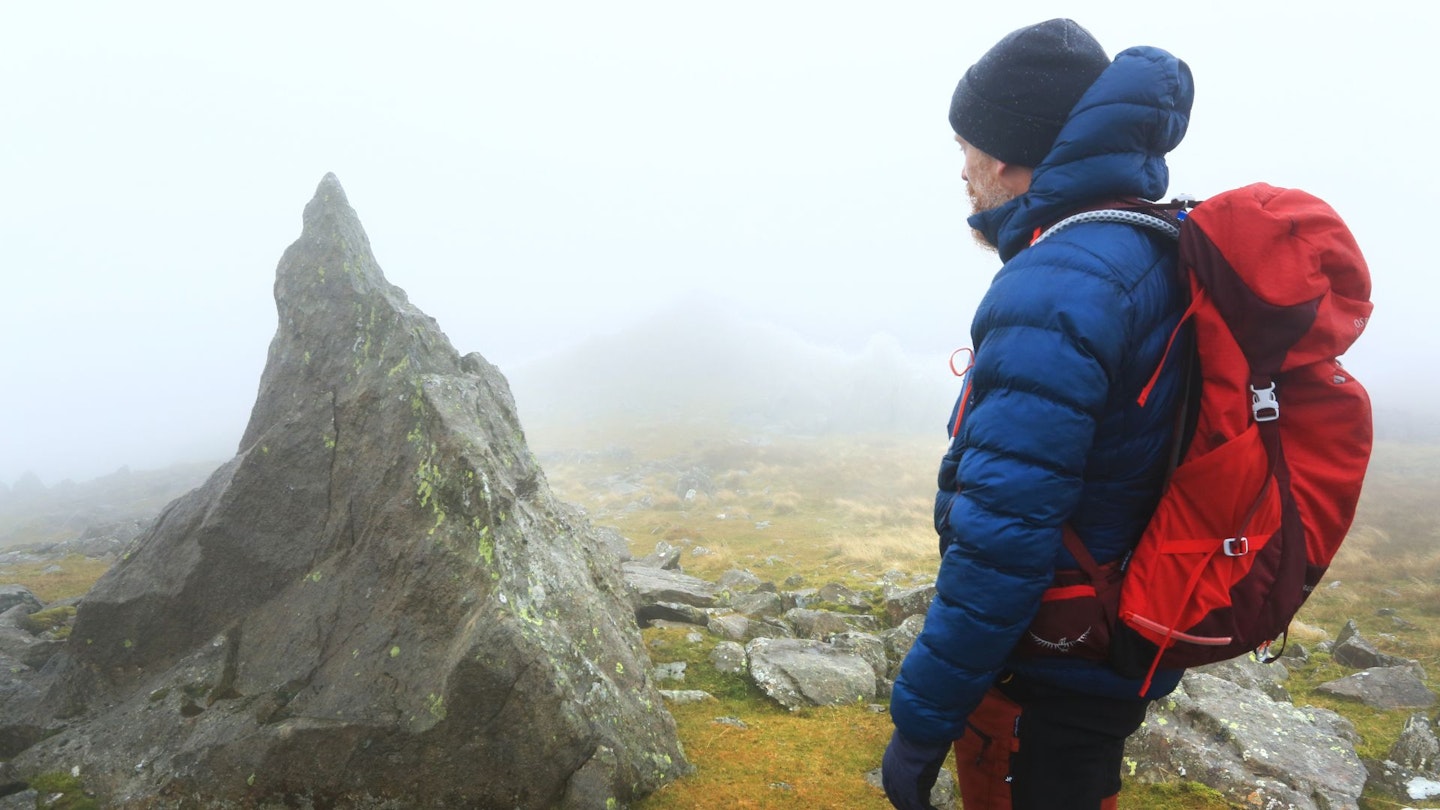
But if you want to reach the summit of Grey Friar as quickly as simply as possible, it’s a good place to start. At least, on paper it is. Ordnance Survey maps show a right of way sweeping south- east across the hillside from Cockley Beck, curving gradually south to climb directly to the fell’s summit. On the ground, though, things were a little different.
The right of way didn’t exist as a path, and the ground it crossed was boggy to the extreme. I ploughed onwards and upwards, deviating from the line of the right of way to find a farm track that paralleled Cockley Beck Gill. This made the going easier for a while, before simultaneously deteriorating into a barely discernible quad bike track and swinging away from my intended destination: the summit. There was nothing for it but to point straight uphill and get trudging.
By now the last vestiges of a view had been swallowed by the clag; I was flying on instruments. The north-west slopes of Grey Friar’s final contours are liberally reinforced with lichen-coated outcrops and fields of weather-greased boulders. I wound round some, clambered over others, and slipped on several. Eventually, the broad summit arrived.
There was no great fanfare or revelation of views. The mist persisted, and it wasn’t immediately obvious where the summit cairn could be found. After some vague wanderings, I found it. Grey Friar was in the bag, but according to the intel I’d found online, my true goal lay 150m north-east.
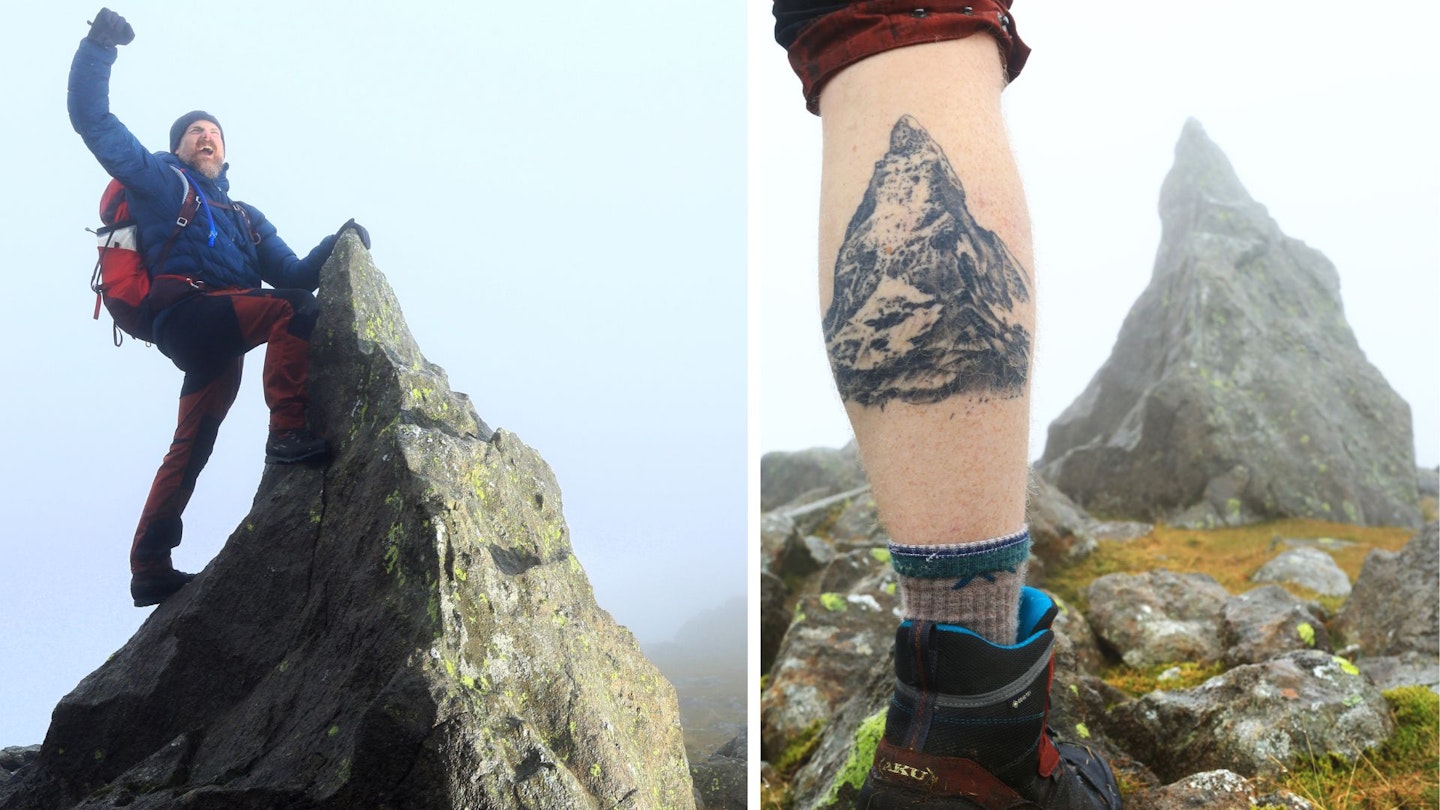
I set off into the nothingness. Shadows loomed as I passed, but none had the outline I was looking for. Then, when I’d all but given up, assuming I’d taken myself on a wild ’horn chase, a recognisable shape resolved out of the gloom. A triangular shape, slightly twisted and crooked, with a narrow ridge leading from its base towards its sharply tapered top.
I approached, agog at what I was looking at. I wandered around to the back of this coincidence of nature. Around the other side, the likeness was not so striking, but as I drew back around to the angle from which I’d first seen it, I was once again struck by the incredible similarity. What I was looking at was the closest facsimile to the Matterhorn I’ve ever seen anywhere. It was perfect. Indeed, it could comfortably pass for the real deal that towers above Zermatt were it not for one thing: it wasn’t quite 7ft tall.
I clambered (although it was more of a big step) up onto this Minihorn and grasped the pointed summit in one hand, leaning off it like King Kong batting planes away from the Empire State Building. Did it feel like being back on the Matterhorn? Not in the slightest.
There’s only one true Matterhorn, and to see that you need to go to the Alps. But if you’re looking for something a little more manageable, ‘Matterhorn Rock’ on Grey Friar is worth seeking out. Just set your expectations accordingly.
More Matterhorns of Great Britain
Grey Friar isn't the only British peak that can lay claim to being the Swiss icon's doppelganger. Here are three more of our favourites, spread across England, Wales and one beautifully mountainous Scottish island.
Cir Mhor, Isle of Arran
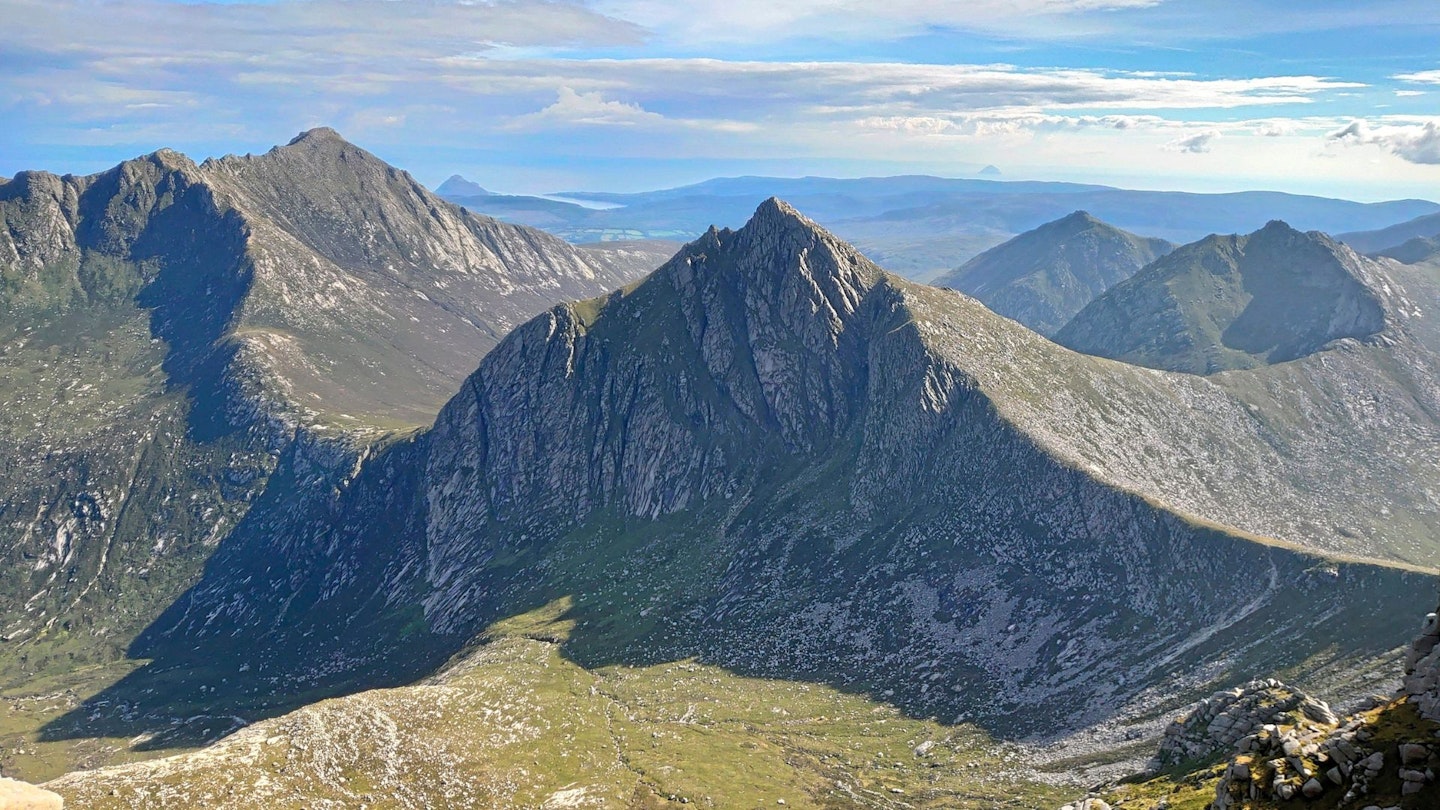
Undoubtedly a pointy peak, what else is it about this wonderfully rocky mountain that makes it worthy of the title the ‘Matterhorn of Arran’? Well, like the Matterhorn, Cir Mhor is the hub of a spoke of ridges. This makes Cir Mhor’s sharp summit appear to be more isolated than it really is. But that’s about as far as it goes. Cir Mhor is still only 799m, and nobody’s topped the Matterhorn on the way to summiting Goat Fell. Matterhorn-alike rating: 4/5
Roseberry Topping, North York Moors

At 320m the ‘Yorkshire Matterhorn’ is almost exactly 14x smaller than its 4478m Swiss counterpart. So why does it draw such a comparison? Partly it’s because, like the Matterhorn, it stands separate from the surrounding landscape and has a slightly angular and crooked summit profile. But mostly it’s because, whatever exists out there in the world, a Yorkshireman will tell you that they have one too and that it’s better. Matterhorn-alike rating: 2/5
Cnicht, Eryri (Snowdonia)
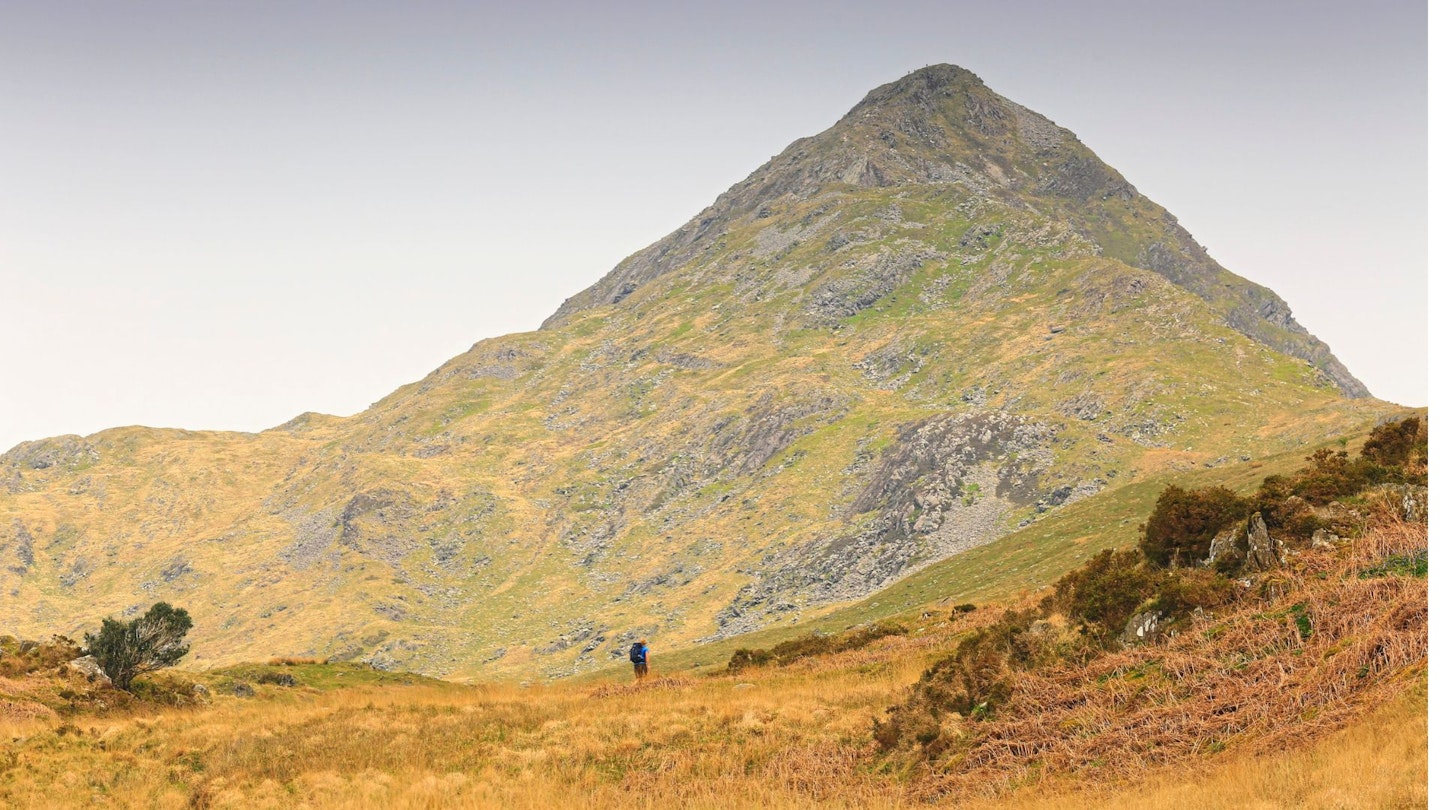
Viewed from a certain angle, Cnicht has more of claim than most mountains to be the Matterhorn of Wales. But therein lies the problem. The angle from which Cnicht appears to rise above Cwm Croesor as a solitary pyramidal peak, somewhat akin to that which stands guard over Zermatt, is quite specific. Seen from almost any other direction the illusion is lost, as the true form of this long snub-nosed ridge mountain is revealed. Matterhorn-alike rating: 3/5
About the author
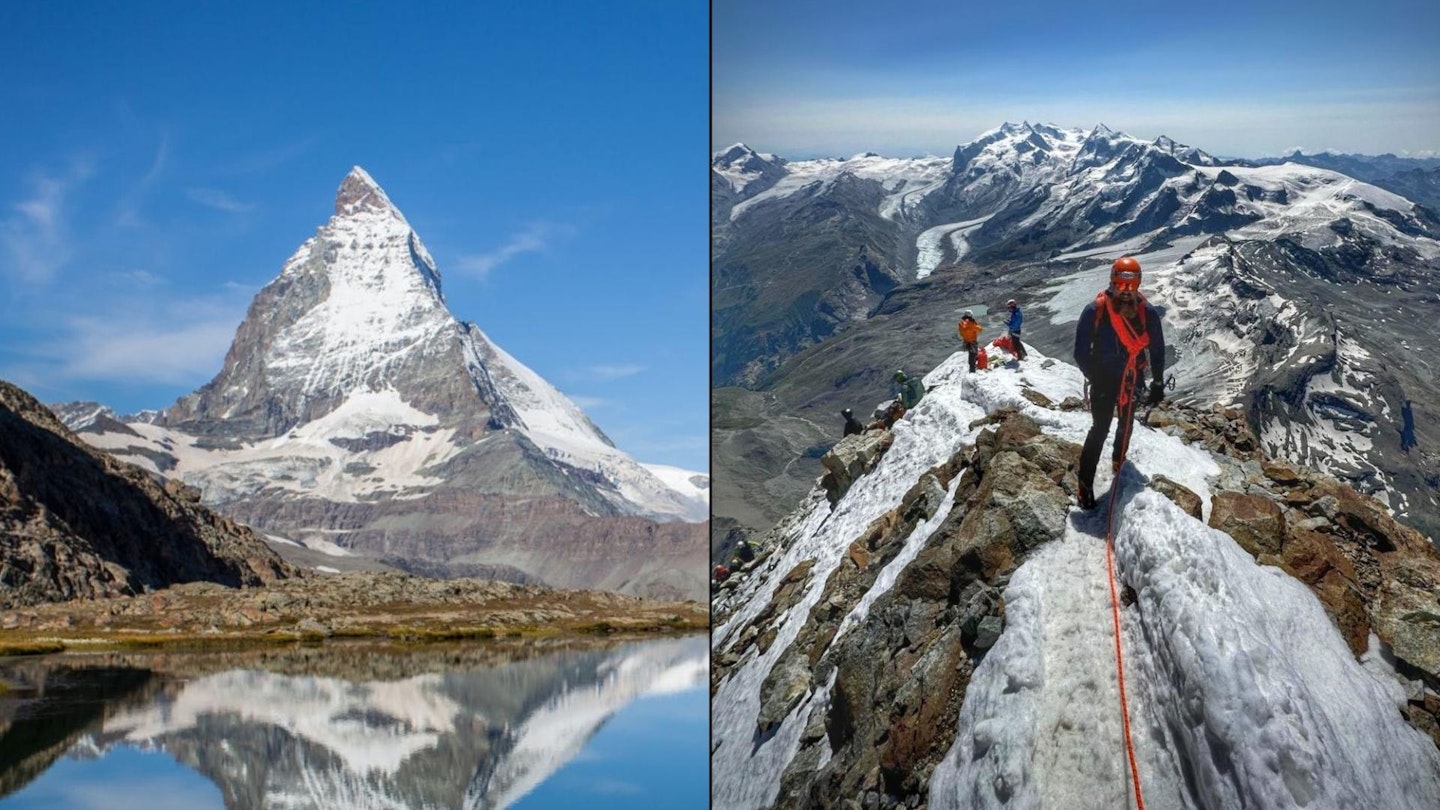
Ben Weeks is Trail magazine's long-serving gear editor – and the perfect person to judge the value of any British Isles 'Matterhorn' because he actually climbed the Swiss version a few summers ago. We didn't even know he'd gone to do it until Ben sent us a selfie of himself on top of the mountain after he'd hit the 4,478m summit.
